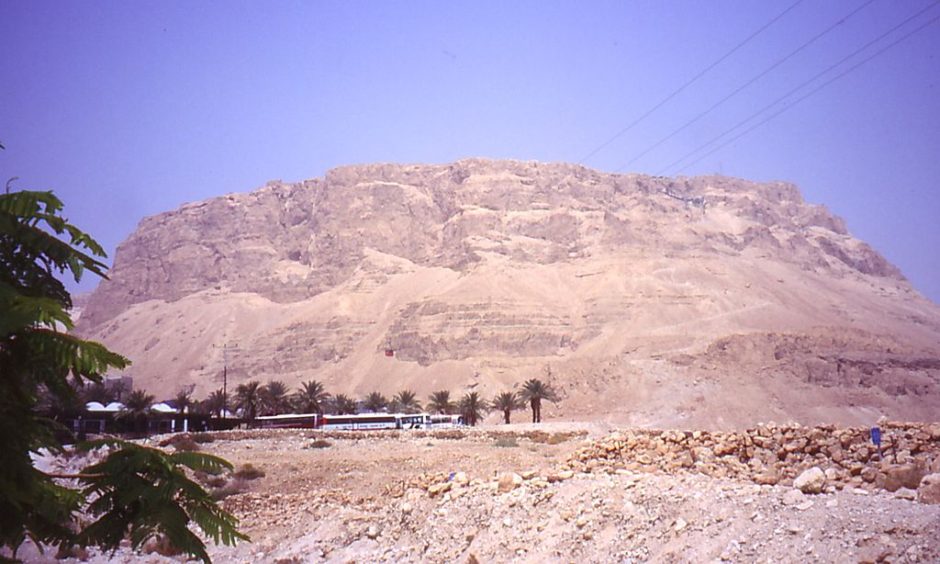The British playwright, composer and singer Noel Coward wrote in jest that only “mad dogs and Englishman go out in the midday sun.” His amusing lyrics came to mind during my last visit to Masada, the ancient Jewish rebel fortress conquered by a Roman army in 74 CE.
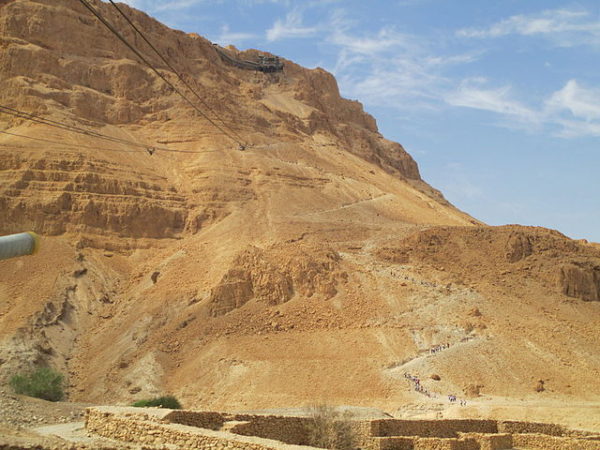
Under a broiling sun in the Judean Desert, I walked up the serpentine Snake Path toward Masada, 450 meters above sea level. The path, rediscovered by Israeli archaeologists in 1953, is only for the physically fit. But even if you’re in tip-top shape, it is not recommended during the hot summer months, when the temperature hovers around the 40 degrees celsius mark. If you ignore this advice, it is advisable to start your climb early in the morning, or use the nearby cable car.
For better or worse, I started at around 10 a.m.

The narrow trail is a jumble of loose rock and 700 rudimentary steps configured in switchbacks. As I ascended the mountain, regularly pausing to rest and drink water, wonderful panoramic views of dessicated grey ridges, the shimmering Dead Sea and the brooding Moab mountains in neighboring Jordan appeared.

Drenched in perspiration despite the super dry heat, I made it to the summit in 45 minutes. Following a brief break, I was ready to tour Masada. I was a eager to revisit such attractions as the Northern Palace and the Bathouse, both of which had been extensively renovated.
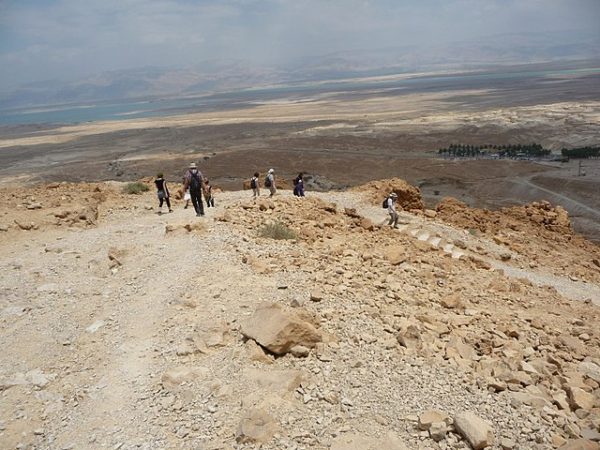
Masada, an Israeli national treasure, is a United Nations World Heritage site. It was built by a Hasmonean monarch and fortified by Herod, a Judean king, during the Second Temple period. Herod also added a palatial winter palace and cisterns.
When the Jews of Judea — a Roman province — rose up in rebellion against their Roman masters in 66CE, Roman legions responded fiercely. The Galilee was subjugated, the Temple in Jerusalem was destroyed and Masada, held by Jewish rebels under the command of Eleazer Ben Yair, was besieged.
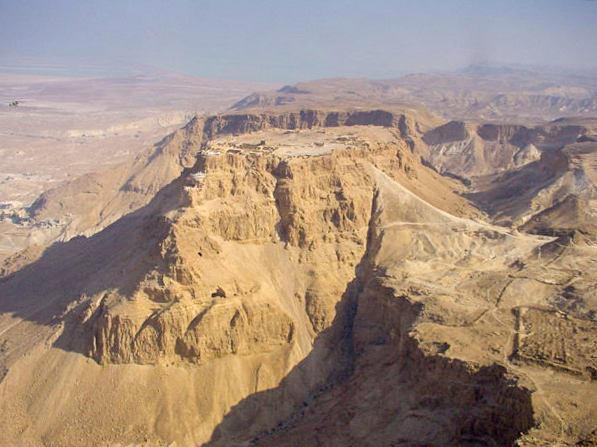
The Roman siege of Masada, the final act in the Roman conquest of Judea, lasted a few months. The Tenth Legion, consisting of about 8,000 soldiers and led by Flavius Silva, prepared for battle by building eight camps, a siege wall, an earthen ramp and a battering ram. Realizing that the Romans had the upper hand, Ben Yair convinced 960 of his followers that death was better than surrender and enslavement.
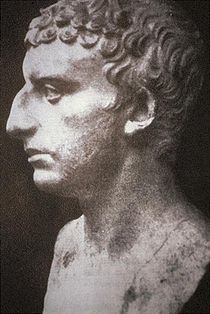
In keeping with his edict, all but several of its inhabitants committed suicide rather than fall into the hands of the Romans. The survivors, two women and five children who had hidden in cisterns during the final days of the Roman offensive, told their story to Josephus, a former Jewish commander in the Galilee who had accommodated himself to Roman domination. Josephus wrote about the fall of Masada in The Wars of the Jews, the only account of the Roman siege.
When the Romans left, Masada was uninhabited for hundreds of years until Christians built a monastery there during the Byzantine era. With the rise of Islam in the seventh century, the building fell into disrepair, becoming a flyblown relic of a murky past.
During the 19th century, British explorers toured Masada and a succession of European archaeologists excavated it. The Hebrew translation of The War of the Jews in the 1920s heightened interest in Masada. The Zionist movement regarded it as a symbol of Jewish courage and steadfastness in the face of great odds.
From 1953 to 1965, Yigal Yadin, an Israeli archaeologist and future politician, carried out major excavations at Masada. He discovered the skeletal remains of 28 people, found the ruins of many buildings, and stumbled upon thousands of artifacts, all of which provided scholars with a much clearer picture of life during the Roman siege.
Further excavations were undertaken by Ehud Netzer in 1989 and 1995.
Masada National Park was opened in 1966, and the first cable car was put into service in 1971, increasing tourist traffic. Until that year, the Snake Path in the east and the less challenging Ramp Path in the west were the only ways of accessing Masada.
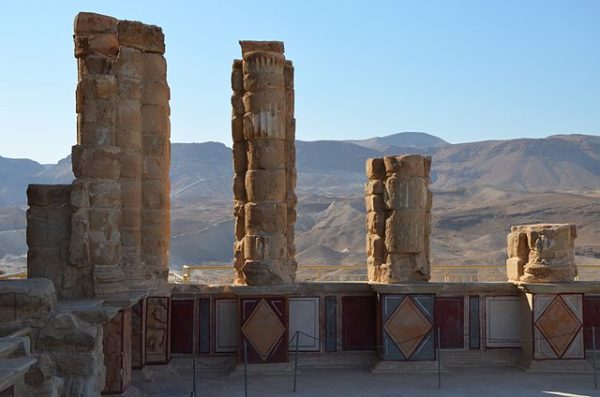
Shortly after reaching Masada, I stopped at the Northern Palace, its showpiece ruin. Incorporating Hellenistic and Roman architectural styles, it is built on three rock terraces supported by sturdy retaining walls. It contains private rooms, a patio and bathhouses whose walls are adorned with remarkably preserved frescoes.
The largest structure on the grounds, the Western Palace, is decorated with colorful mosaics and is built around a courtyard and pools.
The outlines of the Roman siege camp, from which the military assault was launched, are still visible, forming the world’s most complete surviving Roman siege system.

The cisterns, which could hold 40,000 cubic meters of water, were dry on the day of my visit. The rugged landscape adjacent to the cisterns was awesome.
Masada, the last Jewish bastion to succumb to the Roman invaders, is filled to the brim with a profusion of splendid sights. Once a place of despair, it is now a beacon of freedom as Israel marks its 70th anniversary of statehood.
